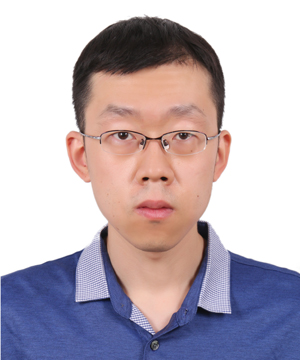
Yuwen Tairan
Tenure-Track Assistant Professor
Phone:+86-13681288268 (mobile)
Email:tyuwen@bjmu.edu.cn
Education & Positions
Peking University, School of Life Sciences, B.S., 2004-2008
Purdue University, Department of Chemistry, Ph.D., 2008-2014
Purdue University, Department of Chemistry, Postdoctoral Fellow, 2015
University of Toronto, Department of Biochemistry, Postdoctoral Fellow, 2015-2019
Peking University, School of Pharmaceutical Sciences, Assistant Professor (Tenure-Track), 2019-
Peking University, State Key Laboratory of Natural and Biomimetic Drugs, PI, 2019-
Research Interests
Our group is interested in the study of biomolecular structure and dynamics, most of our research projects are related to drug design with the aid of nuclear magnetic resonance (NMR) together with many other experimental and computational techniques. Our recent research topics are summarized as below.
1. The study of allosteric effects in biomolecules. This research project mainly focuses on several proteins which already have allosteric sites discovered. Based on the dynamic property of different regions, the coupling mechanism between allosteric and active sites can be recognized, which could provide guidance for the discovery of allosteric sites in many other drug target proteins.
2. Drug design related to intrinsically disordered proteins (IDPs). IDPs do not possess well defined secondary structures under physiological conditions, therefore it is difficult to carry out structural related studies using experimental techniques such as X-ray crystallography. The dynamic property measured from NMR experiments is one of the few properties that can be learned for IDPs, which plays an important role in drug design related to IDPs.
3. The development of NMR pulse sequences. Although currently there are many NMR pulse sequences available for measuring different aspects of molecular properties, many experiments suffer from the issue of low sensitivity or artifact interference, therefore it still requires further optimization of existing NMR pulse sequences, as well as the development of novel NMR pulse sequences.
Selected Publications
1. Yuwen T., Rui H., Vallurupalli P., Kay L. E.*, A methyl-TROSY based 1H relaxation dispersion experiment for studies of conformational exchange in high molecular weight proteins. Angew. Chem. Int. Ed., 2019, 58(19), 6250–6254.
2. Yuwen T., Sekhar A., Baldwin A. J., Vallurupalli P., Kay L. E.*, Measuring diffusion constants of invisible protein conformers by triple-quantum 1H CPMG relaxation dispersion. Angew. Chem. Int. Ed., 2018, 57(51), 16777–16780.
3. Yuwen T., Bah A., Brady J. P., Ferrage F., Bouvignies G., Kay L. E.*, Measuring solvent hydrogen exchange rates by multifrequency excitation 15N CEST: Application to protein phase separation. J. Phys. Chem. B, 2018, 122(49), 11206–11217.
4. Yuwen T., Kay L. E., Bouvignies G.*, Dramatic decrease in CEST measurement times using multi-site excitation. ChemPhysChem, 2018, 19(14), 1707–1710.
5. Yuwen T., Bouvignies G., Kay L. E.*, Exploring methods to expedite the recording of CEST datasets using selective pulse excitation. J. Magn. Reson., 2018, 292, 1–7.
6. Yuwen T., Brady J. P., Kay L. E.*, Probing conformational exchange in weakly interacting, slowly exchanging protein systems via off-resonance R1ρ experiments: Application to studies of protein phase separation. J. Am. Chem. Soc., 2018, 140(6), 2115–2126.
7. Yuwen T., Kay L. E.*, A new class of CEST experiment based on selecting different magnetization components at the start and end of the CEST relaxation element: an application to 1H CEST. J. Biomol. NMR, 2018, 70(2), 93–102.
8. Yuwen T., Sekhar A., Kay L. E.*, Separating dipolar and chemical exchange magnetization transfer processes in 1H-CEST. Angew. Chem. Int. Ed., 2017, 56(22), 6122–6125.
9. Yuwen T., Vallurupalli P., Kay L. E.*, Enhancing the sensitivity of CPMG relaxation dispersion to conformational exchange processes by multiple-quantum spectroscopy. Angew. Chem. Int. Ed., 2016, 55(38), 11490–11494.
10. Yuwen T., Xue Y., Skrynnikov N. R.*, Role of electrostatic interactions in binding of peptides and intrinsically disordered proteins to their folded targets: 2. The model of encounter complex involving the double mutant of the c-Crk N-SH3 domain and peptide Sos. Biochemistry, 2016, 55(12), 1784–1800.
Ph.D. student and postdoc positions are available, welcome to join us! More information about our group can be found at http://sklnbd.bjmu.edu.cn/team/yuwentairan/